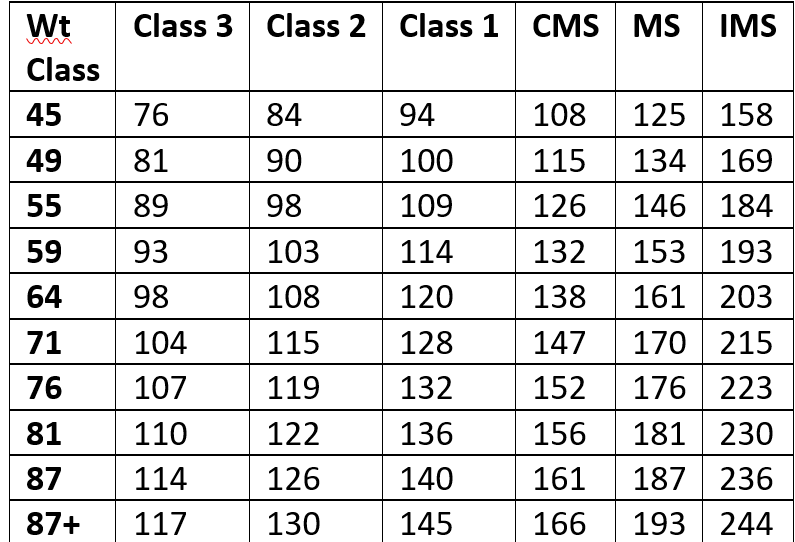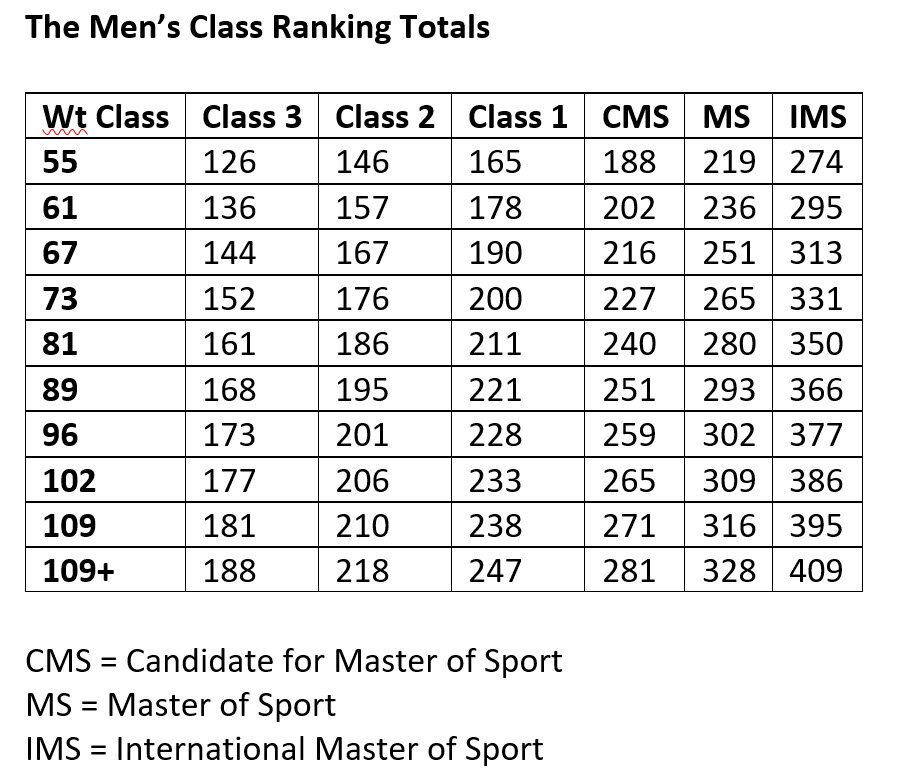Thank you!
Let me begin by thanking all those who’ve purchased my book, Weightlifting Programming. It was a project I’d wanted to complete for some time and I’m happy that so many found it useful.
The IWF Changes the Bodyweight Classes
Since the book’s publication in 2012, the IWF made the decision to change the bodyweight classes and introduced the new ones in 2018. These changes were done for two reasons. The first was to equalize the number of gold medals contested by men and women. The second was to retire records that were established under the less rigorous drug testing technology and politics of the past. Thus there are currently 10 bodyweight classes for men and 10 for women with 7 each being contested in the Olympic Games.
My Numbers
The introduction of new weight classes then made the numbers in Weightlifting Programming more inconvenient to apply although they can still be used. For my own purposes I decided to come up with some new classification totals to make that aspect easier to undertake. So whereas the first women’s class in the pre-2018 system was 48 kg and the total to achieve class 3 status was 80 kg, the new bodyweight classes begin with 45 kg and prior to this date I had not come across new classification totals.
Consequently I decided to calculate my own figures.
The Caveat
I calculated the figures in the tables at the end of this blog simply in order to make it possible to program more accurately. They are to be used in conjunction with the principles outlined in the Weightlifting Programming book. These are tools. I don’t want people calling them “Takano Numbers” because I’m not concerned with marketing them. I may use them to at some point to make up a ranking ladder of my own team members or even as qualifying totals for one of the local meets we conduct. Again, they are tools.
How I Calculated Them
For example for the women’s class 3 totals, I multiplied the Sinclair Coefficient for the limit bodyweight of each class times the Class 3 total for that bodyweight class. So for the 48 kclass, the Sinclair coefficient is 1.585087 and the Class 3 total is 80 kg. I multiplied the two and achieved the Sinclair Total which is 126.80696. I did this for each of the pre-2018 bodyweight classes, added them together and divided by 7 (the number of bodyweight classes) and achieved the mean figure of 126.76272. I then divided this figure by each of the coefficients for the upper limit of each 2018 bodyweight class, rounded them off to the nearest integer and achieved the results shown in the table.
A Brief Diversion on the Sinclair Numbers
The Sinclair coefficients are empirically derived and recalculated every quad. I am here using the 2017-2020 numbers. Thus I may have to recalculate these class numbers when the new Sinclair coefficients are released. The Sinclair coefficients are, as I understand, re-calculated by former students of the late Roy Sinclair who base them on the results of international competitions.
The Women’s Class Ranking Totals


